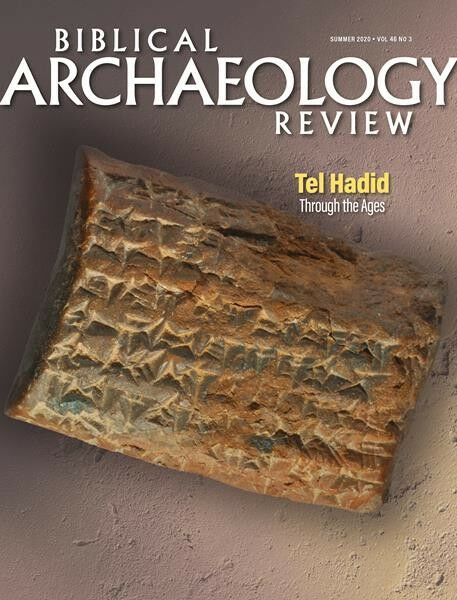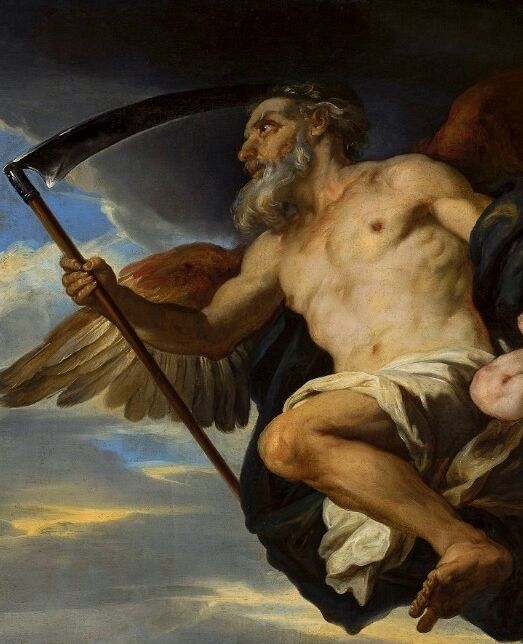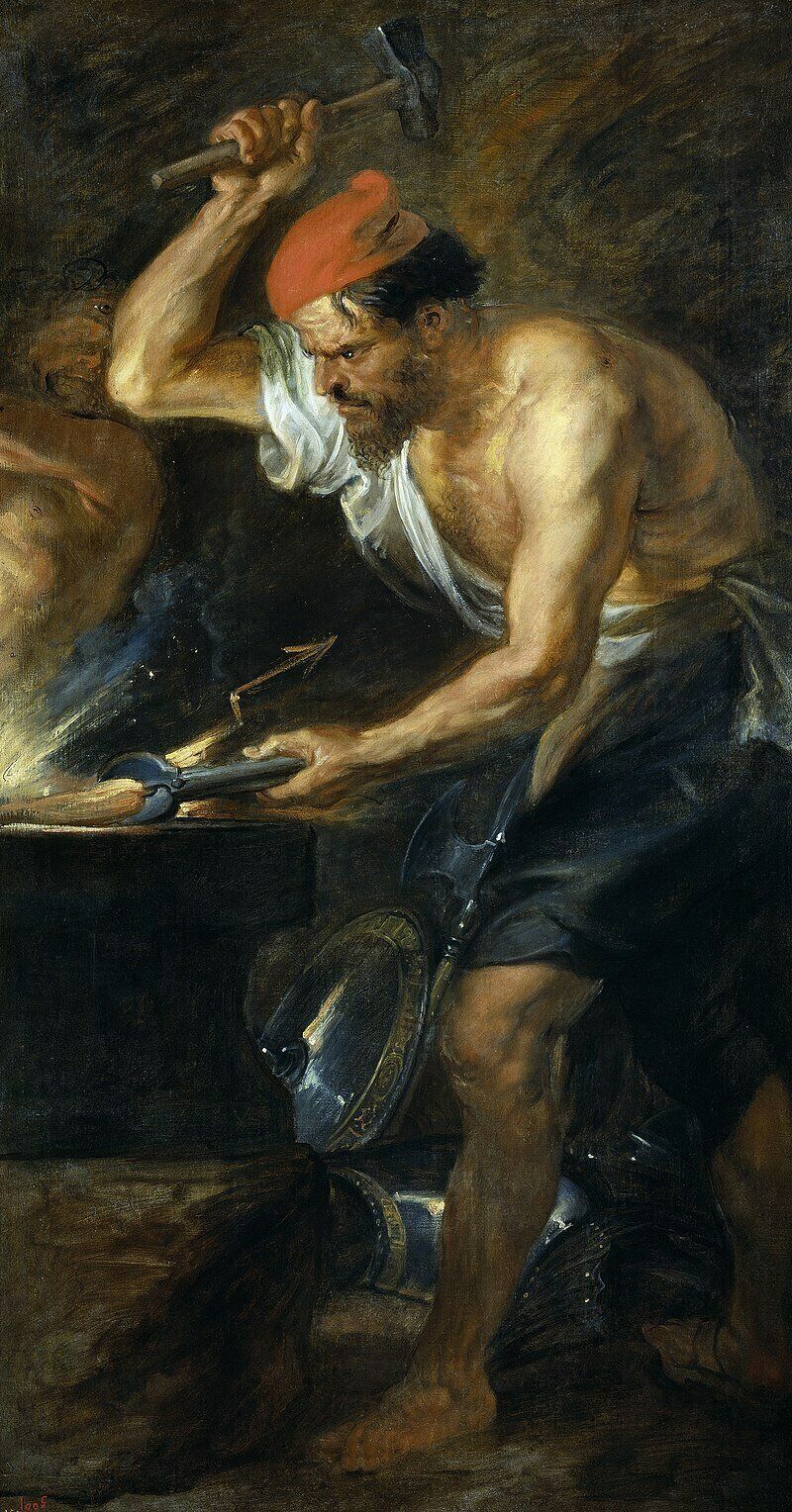Did Angels Marry Women and Breed Giants?
It’s a pretty peculiar question. But it’s one we get asked quite a lot. Did angels marry women and conceive giants? This speculation is based on a passage of scripture in Genesis 6 describing the hedonism of the world before the great Flood. Verses 1-2 and 4 read:
And it came to pass, when men began to multiply on the face of the earth, and daughters were born unto them, that the sons of God saw the daughters of men that they were fair; and they took them wives, whomsoever they chose. … The Nephilim [or, giants] were in the earth in those days, and also after that, when the sons of God came in unto the daughters of men, and they bore children to them; the same were the mighty men that were of old, the men of renown.
So, the question is asked: Did angels marry women and engender a race of giants?

This was posed in the latest issue of Biblical Archaeology Review. Jaap Doedens presented the following options:
Crucial to the understanding of Genesis 6:1-4 is the question: Who are these “sons of God”? The history of interpretation shows two main approaches: They are either human or nonhuman. This has resulted in four different explanations: the “sons of God” as fallen angels, mighty men, descendants of Seth or divine beings.
But there is a fifth option. Let’s examine here, first and foremost, whether or not the “sons of God” are human or angelic beings—and then present the evidence for this fifth option as to who these “sons of God” are.
Angels or Humans?
First question: Were the “sons of God” human or spirit beings?
From the outset, it is important to note that there is no reference to the word angels anywhere in this chapter. We have “sons of God” and “daughters of men.” The biblical terminology “sons of God” can refer to two things: angels (Job 1:6; 2:1; 38:4-7) or men (e.g. Psalm 82:6; Malachi 2:10).
There are a number of immediate red flags with the identification as angels. Angels are spirit beings (Psalm 104:4); women are human beings. They are two different kinds; God established a law that each kind produces only after its own kind (Genesis 1:11, 12, 21).
The evidence against the identification as “angels” is also demonstrated by the context of Genesis 6. God says of these unions, “My spirit shall not always strive with man …”(verse 3; King James Version). And the offspring of these “sons” and “daughters” were clearly human: “and they bore children to them [the ‘sons of God’]; the same were the mighty men that were of old, the men of renown. And the Lord saw that the wickedness of man was great in the earth …. And it repented the Lord that he had made man …. And the Lord said, ‘I will blot out man …’” (verses 4-7). The offspring of these unions were specifically men—not angels, or angel-men.
The New Testament is even more direct. Jesus said that angels (and spirit beings in general) “neither marry, nor are given in marriage” (Matthew 22:30; also Mark 12:25). The “sons of God” in Genesis clearly did marry, taking “wives.” Indeed, Jesus continues to describe the Genesis 6 period as one of “marrying, and giving in marriage” (Matthew 24:48). But again, the angels neither marry, nor are given in marriage.
Further, the New Testament uses the term “sons of God” six different times, each referring to men, never angels (see Hebrews 1:5). Excepting this question of Genesis 6, Job is the only book in the entire Bible that references angels as “sons of God”—evidently here as a simple metaphor for the angels as beings created by God.
If the “sons of God” of Genesis 6 were indeed merely men, why were they given that title?
Who Were They?
The earlier context for this passage is vital. The separate genealogies of Genesis 4 and 5 establish a groundwork for the society of Genesis 6. They include some peculiar terminology that gives clues that point to the above-mentioned fifth option: the “sons of God” as the line of Cain.
Genesis 4:1 describes the first human born—Cain. “And the man knew Eve his wife; and she conceived and bore Cain, and said: ‘I have gotten a man with the help of the Lord.’” The Hebrew language of this verse is somewhat odd. The final part reads, literally: “I have gotten a man, the Lord.” It appears that Eve considered her son to be divine—the prophesied savior of Genesis 3:15 who would restore Adam and Eve to their status prior to eating of the forbidden tree and being cast out of the Garden of Eden.
Given the way Cain turned out, with the murder of his brother Abel and his back-talking to God (Genesis 4:8-9), it is clear he was raised a narcissistic, spoiled brat. The chapter continues to describe Cain’s banishment and his ensuing generations.

The final section of this chapter is likewise notable. Verses 25-26:
And Adam knew his wife again; and she bore a son, and called his name Seth: ‘for God hath appointed me another seed instead of Abel; for Cain slew him.’ And to Seth, to him also there was born a son; and he called his name Enosh; then began men to call upon the name of the Lord.
The name “Enosh” is interesting: It means, simply, man. As Gesenius’ Hebrew-Chaldee Lexicon explains, this name “is rarely used in a singular in sense … generally collectively, of the whole human race.” And at this point in time, men began “to call upon the name of the Lord”—here a separation between men and the Lord. The following chapter describes this genealogy.
In Genesis 4 and 5, then, the antediluvian scene is set with the two chief lineages that begin the human race: the line of Cain (misappropriated as “the Lord”), and the line of Seth–Enosh (“the man”). But again, both very human.
Genesis 4 describes the “exploits” of Cain’s lineage of “mighty men.” These include the first city ever built (verse 17), famous murderers (verses 23-24), a pioneer musician (verse 21), a pioneer blacksmith and weapons-maker (verse 22), and the first noted polygamist (verse 19).
Genesis 5 describes the lineage of Seth. There are no great physical deeds given in this genealogy. Instead, what we do read of is a prophet, Enoch, “taken” in God’s mercy at a comparatively young age (verses 21-24). We read of Enoch’s son, Methuselah, whose name appears to be a prophecy of the great Flood (meaning “death is sent”), who became the oldest man recorded in the Bible, dying the same year as the Flood (and perhaps as a result of it). And we read of Methuselah’s son Lamech, who peculiarly lived 777 years, dying just prior to the Flood (seven is the biblical number of “completion”). A line, then, of more religious-prophetic emphasis, as opposed to Cain’s line of so-called “mighties.”
Furthermore, the Genesis 5 genealogy takes pains to identify Seth as “a son in [Adam’s] own likeness, after his image” (verse 3). There is no such description of Cain or Cain’s lineage—further highlighting the Seth–Enosh line as the “daughters of men,” or Adam (“banot haAdam”)—perhaps even indicating they were more closely resembling Adam on a physical level.
In the Genesis 4 genealogy of Cain, the emphasis is on sons. There is only one mention of a daughter—even then, she is not named as a “daughter” but rather as a “sister” of one of Cain’s male descendants. In the Genesis 5 genealogy of Seth, every single generation is described as begetting “sons and daughters.” The differential emphasis, then, is on the daughters of the line of “men,” (Adam-Seth-Enosh), versus the sons of the line of Cain (“the Lord”).
The Line of Cain—‘Gods’ of Old?
With the very different genealogies of Cain and Seth established in chapters 4 and 5, the scene is set for the Genesis 6 overview of the antediluvian world. And what do we read? Genesis 6:1-2, 4:
And it came to pass, when men began to multiply on the face of the earth, and daughters were born unto them, that the sons of God saw the daughters of men that they were fair; and they took them wives, whomsoever they chose. … [A]nd they bore children unto them; the same were the mighty men that were of old, the men of renown.
Some have considered these “mighty” offspring as the “demigods” of old—notably of Greek and Roman mythology, the product of unions between the gods and human women.
We have examined the evidence that both genealogies are human. But even the Greek and Roman legends help illustrate that the “sons of God” are the human line of Cain—the “mighty men of old.” Here are a handful of examples.

To the ancient Greeks, a goddess named Gaia (meaning “Earth” or “life”) was considered the mother of all living. Gaia immediately comes across as an Eve type—and even the name is similar to a variant of the Hebrew name Eve, Chaia, meaning “life” (and pronounced similarly). Gaia’s child Cronus was the patron of the harvest—symbolized by the sickle and grain. Eve’s son Cain was likewise known specifically as a “tiller of the ground”—a crop farmer (Genesis 4:2-3).
According to Greek mythology, Cronus became leader of the Titans and ruler of the world, after a murderous act of ambush (albeit against his father, rather than his brother) that soaked the ground in blood. Cronus then sired the first generation of Olympians with his sister Rhea.
Cronus was overthrown, however, by his son Zeus, the famously “polygamous” god with numerous human consorts. Zeus may represent Cain’s descendant Lamech—whom the Bible gives some indication killed Cain (verses 15, 23-24) and is the first-noted polygamist.
Through his wives, Zeus sired a number of “mighty” children, including Hephaestus, Apollo, Hermes and Athena. I name these four specifically, because they are close matches to the four children of Lamech—Tubalcain, Jubal, Jabal and Naamah.
- Zeus’s son Hephaestus, known as Vulcan in Roman mythology, is the god of blacksmithing and metalwork. Lamech’s son Tubalcain, pronounced in Hebrew as Tu-vulcain, is the father of blacksmithing.
- Zeus’s son Apollo is the god of music, known especially for his skill on the lyre. Lamech’s son Jubal was the patron of music (or rather, musical perversion), noted for his skill on the lyre (and whose name, pronounced in Hebrew with a first letter Y, is linguistically similar).
- Zeus’s son Hermes is the patron “traveler”-god of herdsmen and livestock. Lamech’s son Jabal is a noted nomad, “father of such as dwell in tents and have cattle.”
- Zeus’s daughter Athena is the goddess of weaving, handicrafts and war. The Bible does not give any details about Naamah, but Jewish tradition identifies her as a weaver of cloth.

Again, as we’ve seen from the biblical account, all are linked to the line of Cain—a very human line—but twisted to a status of divinity, “sons of gods,” marrying “daughters of men,” and begetting “mighty men of old, men of renown.”
The Greek accounts continue that, following the mixing and intermingling of the “gods” and humans, a great flood was sent that covered the Earth and wiped out all human life, except for the righteous Deucalion and his wife, who were spared on an ark. The fascinating parallels point to a late Greek and Roman corruption of earlier, core historical events, as described in the Hebrew Bible.
And as for the “giants”—nephilim—it has been speculated that these were the progeny of the “sons of God” and “daughters of men.” But it is apparent from this verse that giants were not exclusively the progeny of these unions. Verse 4 indicates that these giants existed before and after the “sons of God” married the daughters of men, separate to their offspring. (These giants are also referenced long after the Flood.) See our article “Cavemen Are People Too,” discussing the identity of this early race of humans.
‘Interbreeding in a World of Debauchery’
The wider picture of the antediluvian world painted in Genesis actually matches quite remarkably with scientific research. Last year, dramatic news broke of genetic research that showed (as one news report boldly declared), “Promiscuous Early Humans Interbred ‘Multiple Times’ in ‘World of Debauchery.” The genetic evidence showed that different “groups” of early humans—Homo sapiens, Neanderthals, Denisovans, etc—were “all having sex with each other” in an “environment of rampant promiscuity.” The headlines reporting the discovery were practically a quote of Genesis 6—sons of God, daughters of men, Nephilim, mighty men, all mixing together in a hedonistic, violent world, marrying “all of which they chose”—or in the language of the New Testament, “eating and drinking, marrying and giving in marriage, until the day that Noe entered into the ark” (Matthew 24:38).
https://twitter.com/ticiaverveer/status/1174959790939721729
Thanks to this “mingling,” humans today have a minor blend of these different genes on the background of our Homo sapien dna—“ghost” evidence of this antediluvian mixing among our ancestors.
So did angels marry women and breed giants? No. Different human groups got together with other human groups: some were giants—some deified themselves—some looked more like father Adam—some had “fair” daughters—some had mighty men. All were very human—and all circulate, at least in small part, through our bodies today.